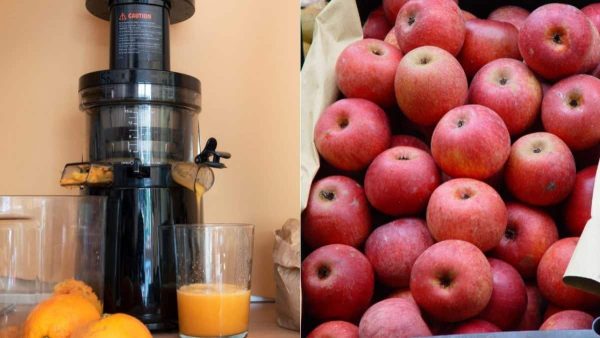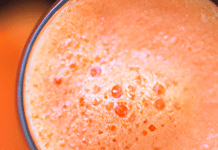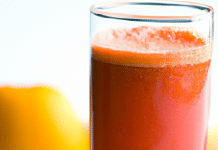Are you a fan of juicing? Thinking about getting a juicer of your own? Before you start extracting that deliciously nutritious goodness, let us give you a heads-up on what NOT to do with a juicer. Some common mistakes can easily be avoided whether you’re a juicing newbie or a seasoned pro.
So, grab a glass of fresh juice (made the right way, of course) and read on to discover the dos and don’ts of juicer etiquette. Whether improper cleaning or using the wrong ingredients, we’ve covered you with our expert tips to ensure your juicing experience is nothing short of fruitful.
Review contents
Overloading the Juicer
Filling the Feed Tube Above Capacity
When it comes to juicing, it’s important to remember that more is not always better. Overloading the juicer by filling the feed tube above its recommended capacity can lead to many problems. Not only can it put excessive strain on the motor, but it can also result in uneven juicing and a lower quality of juice. To avoid this, read the manufacturer’s instructions and only fill the feed tube to the recommended level.
Adding Too Many Ingredients at Once
Another mistake many people make when using a juicer is adding too many ingredients. While throwing in all your favorite fruits and vegetables may be tempting, it can overwhelm the juicer and prevent it from adequately extracting the juice. Adding ingredients in small batches is best, allowing the juicer to work efficiently and produce high-quality juice. Take your time and enjoy the process rather than rushing to finish the juicing.
Using Improper Cutting Techniques
Not Removing Seeds and Pits
One common mistake when using a juicer is failing to remove seeds and pits from their fruits before juicing them. This can cause damage to the juicer’s blades and result in a bitter taste in the juice. Before adding any fruit to the juicer, remove any seeds or pits to ensure a smooth and delicious juicing experience.
Not Cutting Ingredients into Smaller Pieces
Another technique mistake is not cutting ingredients into smaller, more manageable pieces. Trying to juice large chunks of fruits or vegetables can put unnecessary strain on the juicer and result in inefficient extraction. By cutting your ingredients into smaller pieces, you make it easier for the juicer to process them and improve the overall quality of the juice.
This image is the property of staticcookist.akamaized.net.
Ignoring Maintenance and Cleaning
Not Cleaning the Juicer After Each Use
Maintaining your juicer is crucial to its longevity and overall performance. One common mistake is neglecting to clean the juicer after each use. The remnants of fruits and vegetables can quickly become a breeding ground for bacteria, and if left uncleaned, it can affect the taste and quality of your future juices. Make it a habit to thoroughly clean your juicer after every use, following the manufacturer’s instructions for disassembly and cleaning.
Not Disassembling and Cleaning the Parts Properly
In addition to not cleaning the juicer after each use, another mistake is not correctly disassembling and cleaning all the parts. Many juicers have multiple components that must be taken apart and cleaned individually. Not doing so risks a buildup of residue and particles that can impact the juicer’s performance and cause damage over time. Take the time to carefully disassemble and clean your juicer’s parts, ensuring that it is in optimal condition for your next juicing session.
Using Incompatible Ingredients
Using Ingredients with a High Starch Content
Not all ingredients are suitable for juicing, especially those with a high starch content. Ingredients like bananas, avocados, and potatoes do not juice well and can cause clogs and damage your juicer. Researching and choosing ingredients compatible with juicing is essential to avoid mishaps. Stick to fruits and vegetables that produce high-quality juice, such as apples, carrots, and leafy greens.
Using Frozen Ingredients without Thawing
While it may seem convenient to use frozen fruits or vegetables in your juicer, it’s important to thaw them first. Frozen ingredients can place undue stress on the juicer’s motor, potentially leading to overheating or damage. Thawing the ingredients beforehand allows the juicer to work more efficiently and ensures a smoother juicing. Take the time to let your frozen ingredients thaw before juicing them for the best results.
This image is the property of cdn.mos.cms.futurecdn.net.
Running the Juicer for Too Long
Overheating the Motor
Just like any other appliance, juicers have their limitations. Running the juicer for an extended period can cause the motor to overheat, leading to potential damage or reduced performance. It’s essential to follow the recommended usage guidelines provided by the manufacturer and give your juicer breaks to cool down if needed. Remember, a well-maintained juicer appropriately used will last much longer and provide superior results.
Damaging the Juicer’s Performance
Overusing your juicer by running it for too long can also cause a decline in its overall performance. The blades may become dull, the extraction may become less efficient, and the juice quality may deteriorate. By being mindful of the recommended usage time and taking proper breaks between juicing sessions, you can extend the lifespan of your juicer and ensure that it continues to work at its best.
Using the Wrong Juicer for the Job
Using a Centrifugal Juicer for Leafy Greens
Not all juicers are created equal, and using the wrong juicer for the job can have unwanted consequences. For instance, using a centrifugal juicer for leafy greens like kale or spinach may not yield the best results. Centrifugal juicers operate at high speeds, which can result in poor juice extraction from delicate greens, leaving you with less juice and wasted ingredients. Consider investing in a masticating juicer for leafy greens to ensure optimal results.
Using a Citrus Juicer for Hard Fruits
Similarly, using a citrus juicer for hard fruits can lead to disappointment. Citrus juicers are specifically designed for extracting juice from citrus fruits like oranges and lemons, as they have a specialized cone-shaped reamer that efficiently squeezes out the juice. However, a citrus juicer may struggle to extract juice effectively when it comes to hard fruits like apples or pears. Choosing the right juicer for the job is essential to ensure you get the most out of your ingredients.
This image is the property of hips.hearstapps.com.
Using Unsuitable Containers
Using Glass Containers with a Centrifugal Juicer
Choosing a suitable container for collecting your juice is often overlooked but can make a difference in preserving its freshness and flavor. It’s best to avoid using glass containers when using a centrifugal juicer. The high-speed spinning action of the juicer can create turbulence, causing the juice to splash and potentially break the glass container. Instead, opt for BPA-free plastic or stainless steel containers that are sturdy and safe for juicing.
Using Plastic Containers for Hot Juices
On the other hand, if you’re making hot juices such as soups or warm fruit blends, plastic containers may not be the best choice. Plastic can easily warp or release harmful chemicals when exposed to high temperatures. It’s safer to use heat-resistant glass containers or stainless steel for hot or warm juices, ensuring the integrity of the container and the juice.
Not Monitoring the Juice Pulp
Allowing the Pulp Bin to Overflow
When juicing, monitoring the pulp bin is essential to prevent it from overflowing. Letting the pulp accumulate beyond the maximum capacity can cause clogs and strains on the juicer. Moreover, it can hinder the extraction process, resulting in less efficient juicing. Regularly emptying the pulp bin, especially when juicing a larger quantity of produce, ensures smooth operation and consistent juice extraction.
Not Adjusting the Pulp Ejection Setting
Some juicers allow you to adjust the pulp ejection setting, determining the amount of pulp filtered into the juice. Not adjusting this setting according to your preference can affect the texture and overall experience of the juice. If you prefer a smoother juice, adjust the pulp ejection setting accordingly. Experiment with different settings to find the perfect balance between pulp and juicing efficiency.
This image is the property of www.healthdigest.com.
Operating the Juicer without Safety Features
Not Locking the Safety Latch
Safety should always be a top priority when operating any kitchen appliance, including a juicer. Neglecting to lock the safety latch can lead to accidental starts or other malfunctions. Ensure the safety latch is engaged correctly before turning on the juicer. This simple step can prevent unexpected mishaps and protect you and the juicer from potential harm.
Ignoring the Overload Protection Feature
Many juicers come equipped with an overload protection feature, which automatically shuts off the juicer if it becomes overloaded or overheated. It’s important not to ignore this feature and to understand your specific juicer’s maximum capacity and usage limits. Overloading the juicer can cause excessive strain on the motor and other components, potentially leading to damage or reduced performance. Respect the overload protection feature and never push your juicer beyond its capabilities.
Not Reading the Juicer Manual
Ignoring the Manufacturer’s Instructions
Last but certainly not least, one of the biggest mistakes people make when using a juicer is not reading the manual or ignoring the manufacturer’s instructions. Each juicer is unique and may have specific features or limitations that need to be understood and followed. By taking the time to read the manual thoroughly, you can avoid mistakes, maximize your juicer’s potential, and ensure safe and efficient operation.
Misusing the Juicer’s Features
In addition to not reading the manual, misusing the juicer’s features can lead to less-than-ideal results. Understanding the purpose and limitations of each feature is essential for producing high-quality juice. Experimenting with different settings and techniques can be beneficial, but make sure to use them by the manufacturer’s instructions. Improper use of features may impact the juice’s quality and potentially damage the juicer in the long run.
In conclusion, it’s essential to avoid these common mistakes when it comes to using a juicer. From overloading the juicer to using incompatible ingredients, each mistake can impact the juicer’s performance, the quality of the juice, and even your overall experience. By following the best practices, taking proper care of your juicer, and respecting its limitations, you can ensure a smooth and enjoyable juicing journey, resulting in refreshing and nutritious drinks for you and your loved ones. Happy juicing!
This image is the property of center4research.org.





































